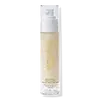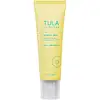What's inside
What's inside
 Key Ingredients
Key Ingredients

 Benefits
Benefits

 Concerns
Concerns

 Ingredients Side-by-side
Ingredients Side-by-side

Homosalate 10%
Skin ConditioningEthylhexyl Salicylate 5%
UV AbsorberOctocrylene 4%
UV AbsorberButyl Methoxydibenzoylmethane 3%
UV AbsorberIsododecane
EmollientDimethicone
EmollientButyloctyl Salicylate
Skin ConditioningC12-15 Alkyl Benzoate
AntimicrobialCaprylyl Methicone
Skin ConditioningCaprylic/Capric Triglyceride
MaskingDimethicone/Vinyl Dimethicone Crosspolymer
Skin ConditioningMica
Cosmetic ColorantTitanium Dioxide
Cosmetic ColorantTocopheryl Acetate
AntioxidantSilica
AbrasiveTin Oxide
AbrasiveTocopherol
AntioxidantHomosalate 10%, Ethylhexyl Salicylate 5%, Octocrylene 4%, Butyl Methoxydibenzoylmethane 3%, Isododecane, Dimethicone, Butyloctyl Salicylate, C12-15 Alkyl Benzoate, Caprylyl Methicone, Caprylic/Capric Triglyceride, Dimethicone/Vinyl Dimethicone Crosspolymer, Mica, Titanium Dioxide, Tocopheryl Acetate, Silica, Tin Oxide, Tocopherol
Butyl Methoxydibenzoylmethane
UV AbsorberHomosalate
Skin ConditioningEthylhexyl Salicylate
UV AbsorberWater
Skin ConditioningButyloctyl Salicylate
Skin ConditioningPentylene Glycol
Skin ConditioningLactococcus Ferment Lysate
Skin Conditioning1,2-Hexanediol
Skin ConditioningSilica
AbrasiveEctoin
Skin ConditioningGlycerin
HumectantArginine
MaskingHydroxyectoin
BufferingAnanas Sativus Fruit Extract
Skin ConditioningCarica Papaya Fruit Extract
Skin ConditioningLactic Acid
BufferingCamellia Sinensis Leaf Extract
AntimicrobialHedychium Coronarium Root Extract
MaskingTriethyl Citrate
MaskingCitrus Aurantium Dulcis Peel Extract
Emulsion StabilisingCitrus Limon Peel Extract
EmollientPyrus Communis Fruit Extract
Skin ConditioningPyrus Malus Fruit Extract
Skin ConditioningRubus Idaeus Fruit Extract
AstringentVanilla Planifolia Fruit Extract
Skin ConditioningPimpinella Anisum Fruit Extract
MaskingMica
Cosmetic ColorantTocopherol
AntioxidantAmmonium Acryloyldimethyltaurate/Vp Copolymer
Synthetic Fluorphlogopite
Hydrolyzed Wheat Protein/Pvp Crosspolymer
Carbomer
Emulsion StabilisingDibutyl Lauroyl Glutamide
Skin ConditioningDibutyl Ethylhexanoyl Glutamide
Skin ConditioningPropanediol
SolventTrisodium Ethylenediamine Disuccinate
Sodium Chloride
MaskingSodium Benzoate
MaskingEthylhexylglycerin
Skin ConditioningTin Oxide
AbrasivePhenoxyethanol
PreservativeButyl Methoxydibenzoylmethane, Homosalate, Ethylhexyl Salicylate, Water, Butyloctyl Salicylate, Pentylene Glycol, Lactococcus Ferment Lysate, 1,2-Hexanediol, Silica, Ectoin, Glycerin, Arginine, Hydroxyectoin, Ananas Sativus Fruit Extract, Carica Papaya Fruit Extract, Lactic Acid, Camellia Sinensis Leaf Extract, Hedychium Coronarium Root Extract, Triethyl Citrate, Citrus Aurantium Dulcis Peel Extract, Citrus Limon Peel Extract, Pyrus Communis Fruit Extract, Pyrus Malus Fruit Extract, Rubus Idaeus Fruit Extract, Vanilla Planifolia Fruit Extract, Pimpinella Anisum Fruit Extract, Mica, Tocopherol, Ammonium Acryloyldimethyltaurate/Vp Copolymer, Synthetic Fluorphlogopite, Hydrolyzed Wheat Protein/Pvp Crosspolymer, Carbomer, Dibutyl Lauroyl Glutamide, Dibutyl Ethylhexanoyl Glutamide, Propanediol, Trisodium Ethylenediamine Disuccinate, Sodium Chloride, Sodium Benzoate, Ethylhexylglycerin, Tin Oxide, Phenoxyethanol
 Reviews
Reviews

Ingredients Explained
These ingredients are found in both products.
Ingredients higher up in an ingredient list are typically present in a larger amount.
Also known as Avobenzone, this ingredient is a chemical sunscreen filter that provides protection in the UV-A range.
Avobenzone is globally approved and is the most commonly used UV-A filter in the world.
Studies have found that avobenzone becomes ineffective when exposed to UV light (it is not photostable; meaning that it breaks down in sunlight). Because of this, formulations that include avobenzone will usually contain stabilizers such as octocrylene.
However, some modern formulations (looking at you, EU!) are able to stabilize avobenzone by coating the molecules.
Avobenzone does not protect against the UV-B range, so it's important to check that the sunscreen you're using contains other UV filters that do!
The highest concentration of avobenzone permitted is 3% in the US, and 5% in the EU.
Learn more about Butyl MethoxydibenzoylmethaneButyloctyl Salicylate is a chemical UV filter structurally similar to octisalate. It is a photostabilizer, SPF booster, emollient and solvent. This ingredient helps evenly spread out ingredients.
According to a manufacturer, it is suitable for pairing with micro Titanium Dioxide, Zinc Oxide, and pigments.
Photostabilizers help stabilize UV-filters and prevents them from degrading quickly.
Learn more about Butyloctyl SalicylateEthylhexyl Salicylate is an organic compound used to block UV rays. It primarily absorbs UVB rays but offers a small amount of UVA protection as well.
Commonly found in sunscreens, Ethylhexyl Salicylate is created from salicylic acid and 2-ethylhexanol. You might know salicylic acid as the effective acne fighter ingredient and BHA.
The ethylhexanol in this ingredient is a fatty alcohol and helps hydrate your skin, similar to oils. It is an emollient, which means it traps moisture into the skin.
According to manufacturers, Ethylhexyl Salicylate absorbs UV wavelength of 295-315 nm, with a peak absorption at 307-310 nm. UVA rays are linked to long term skin damage, such as hyperpigmentation. UVB rays emit more energy and are capable of damaging our DNA. UVB rays cause sunburn.
Learn more about Ethylhexyl SalicylateHomosalate is a chemical sunscreen filter that provides protection in the UV-B range (280nm - 320 nm), with a peak protection at 306 nm. It is internationally approved for use in sunscreens.
Homosalate is not photo-stable, meaning it's strength as a UV filter degrades over time with exposure to the sun. Because of this, it's often used in combination with other chemical sunscreen filters as avobenzone (which protects from the UV-A range). Homosalate also helps act as a solvent for harder-to-dissolve UV filters.
(Part of the reason that sunscreens need to be frequently re-applied is due to the photo instability of many chemical sunscreen filters)
Currently, homosalate is approved in concentrations up to 10% in the EU and 15% in the US. The FDA is currently doing further research on the effects of homosalate, and it is possible that these approved concentrations will change in the future.
Learn more about HomosalateMica is a naturally occurring mineral used to add shimmer and color in cosmetics. It can also help improve the texture of a product or give it an opaque, white/silver color.
Serecite is the name for very fine but ragged grains of mica.
This ingredient is often coated with metal oxides like titanium dioxide. Trace amounts of heavy metals may be found in mica, but these metals are not harmful in our personal products.
Mica has been used since prehistoric times throughout the world. Ancient Egyptian, Indian, Greek, Roman, Aztec, and Chinese civilizations have used mica.
Learn more about MicaSilica, also known as silicon dioxide, is a naturally occurring mineral. It is used as a fine, spherical, and porous powder in cosmetics.
Though it has exfoliant properties, the function of silica varies depending on the product.
The unique structure of silica enhances the spreadability and adds smoothness, making it a great texture enhancer.
It is also used as an active carrier, emulsifier, and mattifier due to its ability to absorb excess oil.
In some products, tiny microneedles called spicules are made from silica or hydrolyzed sponge. When you rub them in, they lightly polish away dead skin layers and enhance the penetration of active ingredients.
Learn more about SilicaTin Oxide is an inorganic oxide used to add opacity and volume to a product. In nature, it is already found in mineral form. The main ore of tin is an opaque and shiny mineral called casseterite.
Tin Oxide helps remove translucency in a product, or make it more opaque. Besides adding opacity, tin oxide is used for bulking to add volume.
Tocopherol (also known as Vitamin E) is a common antioxidant used to help protect the skin from free-radicals and strengthen the skin barrier. It's also fat soluble - this means our skin is great at absorbing it.
Vitamin E also helps keep your natural skin lipids healthy. Your lipid skin barrier naturally consists of lipids, ceramides, and fatty acids. Vitamin E offers extra protection for your skin’s lipid barrier, keeping your skin healthy and nourished.
Another benefit is a bit of UV protection. Vitamin E helps reduce the damage caused by UVB rays. (It should not replace your sunscreen). Combining it with Vitamin C can decrease sunburned cells and hyperpigmentation after UV exposure.
You might have noticed Vitamin E + C often paired together. This is because it is great at stabilizing Vitamin C. Using the two together helps increase the effectiveness of both ingredients.
There are often claims that Vitamin E can reduce/prevent scarring, but these claims haven't been confirmed by scientific research.
Learn more about Tocopherol